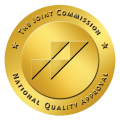Making the decision to inpatient rehab is a significant one. It means that you have accepted and decided to get the help that you need in order to take back control of your life.
Like all big decisions, deciding to go to rehab can inspire a wide range of emotions. These can include excitement for the positive changes to come, nervousness about the unknown, and perhaps even some confusion about what to expect.
While thinking about what to pack and bring with you may seem like a strange thing to worry about, it’s actually much more common than you think. Most rehab facilities have specific guidelines to ensure that people attending rehab can focus on their recovery and not be distracted. Bringing the right items can also ensure your stay in rehab is as comfortable as possible.
What To Bring to Inpatient Rehab
 If you are unsure of what to bring, it’s always good to start off by checking with the rehab facility that you are going to in order to see if they have any sort of specific guidelines as it relates to items you are allowed to have. They may also differ by program, as attending a program for a few weeks may require a different packing list than a 90-day residential rehab program.
If you are unsure of what to bring, it’s always good to start off by checking with the rehab facility that you are going to in order to see if they have any sort of specific guidelines as it relates to items you are allowed to have. They may also differ by program, as attending a program for a few weeks may require a different packing list than a 90-day residential rehab program.
Here are some essential packing items to keep in mind:
Clothing
Many rehab facilities have regulations about the type of clothing that is allowed and the last thing you want to do is pack clothing items that aren’t allowed.
When packing clothing items, here are some things to consider:
- Comfort: Rehab is not a fashion show. You are there to get professional help for addiction, not impress others. Pack with comfort in mind. It’s best to pack with a conservative mindset, with no overly revealing clothing or items with potentially offensive images.
- Weather-Appropriate Clothing: Temperatures inside rehab facilities can vary, and outdoor activities are included in many programs. Make sure you have appropriate clothing for varying temperatures when packing, such as short and long-sleeved shirts, jackets, and sweaters.
- Pack For the Location: This is particularly important for those going to rehab facilities outside of their local area. If you are going to rehab in a warmer climate, you will want to make sure to have plenty of breathable, lightweight clothes. On the flip side, comfortable and warm clothing that allows for movement is important for cooler environments.
It’s important to check with the rehab facility to see if they provide laundry services. While most do, it’s not always a guarantee and it may determine how much clothing you need to pack. If laundry services are offered, it’s good to pack enough clothing to last a week.
Toiletries
While this may also seem obvious, rehab facilities often have a lot of rules when it comes to permitted toiletry items. Here are some things to consider when packing those important toiletry items:
- Keep Things Fragrance-Free. While you may enjoy the scent of your toiletry products, other people may have sensitivities. This is especially important in close quarters. Out of respect to your fellow people in treatment, try to use mild scents or go fragrance-free as much as possible.
- Check To See What Items Are Restricted. While essentials such as toothbrushes and toothpaste should be included, it’s important to check with the rehab to see if any specific brands or ingredients are restricted before you pack. For example, if you use a mouthwash that has alcohol in it, chances are you won’t be able to bring it with you. This may also apply to potentially dangerous items, such as bathroom razors.
- Bring Your Medications. If you take any sort of over-the-counter medications it’s usually permitted for you to bring them. This will typically also apply to prescription medications. Rehab facilities will often ask you to “surrender” the medications, and the staff will be responsible for administering them to you as needed.
Shoes
Since outdoor activities are often involved in rehab programming, you will want to make sure you have a good, comfortable pair of tennis or athletic shoes with you for outdoor activities. These may include walking, hiking, or ropes courses.
If you are going to a facility that has communal showers, a pair of flip-flops or shower shoes is going to be key. Of course, don’t forget a pair of comfortable shoes or slippers for those times when you may be lounging around.
Personal Items
Since you will be living at the facility for an extended period of time, many rehab facilities allow you to bring small personal items that may hold significant value to you or make your stay more comfortable.
Personal items you may want to consider bringing include:
- Photos
- Comfortable socks or loungewear
- Non-digital music players
- Books
- Magazines
- Art supplies
- Journal or notebook
Downtime Items
While your time in rehab is highly structured and the majority of your time is filled with various therapies and treatments, there will also be scheduled downtimes for you to relax and reflect. Depending on the rules of the rehab, you may be able to bring some items to use during those downtimes, whether it be books or magazines. This can also include fun items that involve other people, like puzzles or board games.
What Not to Bring to Rehab
While knowing what to bring is important, knowing what not to bring is just as important. You may not want the attention or hassle that may result from the rehab staff catching you with contraband. You may have the items taken from you, or even disposed of entirely.
While every facility is different as it relates to what you can and can’t bring, below are some common things that are often banned from rehab facilities:
While this may seem obvious, people have tried to bring illicit items into rehab before. It’s important to know the rehab’s definition of an illicit substance, as it may include potentially abusable substances (such as inhalants like markers or glue) or those that may trigger other participants (such as injection needles for diabetes treatment).
While there are some rehab facilities that allow the use of communication and technological devices, the majority do not. If you are going to a facility that restricts these types of items, it’s best to plan to leave the phones, tablets, laptops, smartwatches, etc. at home. The rehab may also have procedures for checking electronic devices in and out at the front desk.
While this may seem like an odd requirement, especially if the substances are natural and have no illicit substances in them, many rehab centers ask that individuals leave these types of items at home due to potential interactions with treatment protocols. In the event that it is determined that you can use or benefit from supplements or health products, the facility may provide them to you medical supervision as part of your overall treatment program.
Most rehab facilities provide balanced meals and snacks as part of your overall treatment and recovery program. These items are specifically picked out or made based on dietary requirements for treatment. Should you have any food allergies or dietary restrictions, it is important to alert the facility before you arrive so they can plan accordingly.
While photos are fine to bring, avoid bringing large posters or wall decorations. Many rehab centers aim to provide a clean, uncluttered environment, so bringing large decorations is often discouraged. This includes scented items like candles, incense, or air fresheners. Not only could the scents bother other people, but they may also be a distraction or fire hazard.
If you are on the fence about bringing an item, either lean on the side of caution and don’t bring it. You may be able to check with the facility and ask if that specific item is allowed before packing it.
What Happens if I Bring a Prohibited Item to Rehab?
Rehab facilities have strict rules about prohibited items to ensure everyone’s safety and promote a focused healing environment. If you accidentally bring a restricted item to Magnolia City Detox, staff will typically address it during the admissions process. In most cases, prohibited items are securely stored until your stay is over or disposed of if necessary. Our staff may also send unneeded or prohibited items home with a loved one if they bring you to the facility.
The intention isn’t to punish but to maintain an atmosphere where all clients can focus on recovery without distractions or risks. Understanding the guidelines in advance helps avoid unnecessary complications, so be sure to review the provided packing list carefully before your arrival.
Have Questions? Contact Magnolia City Detox
If you’re unsure about what to pack or need clarity on the items allowed during treatment, don’t hesitate to reach out to our admissions team. The team at Magnolia City Detox is here to guide you through every step of the process, from admissions to recovery. Call or visit us today for personalized assistance and to better understand how to prepare for your journey toward healing. Your comfort and confidence in this process matter to us!
Heal From Addiction at Rehab Programs at Magnolia City Detox

Packing for rehab requires striking a balance between bringing comforting items and adhering to necessary guidelines. Thoughtful packing can contribute to a smooth transition and a successful start to your recovery journey.
At Magnolia City Detox, we understand the potentially complicated nature of packing for rehab. If you have any questions at any point, we are always here to help. Our residential treatment programs range from 30 to 90 days, and we understand it can be hard to think so far ahead about what you may need. We’re here to help you at every step of your recovery journey.
For more information about what to bring or what not to bring to our rehab facility, or to learn more about how Magnolia City Detox can help with your recovery process, contact us today.

















